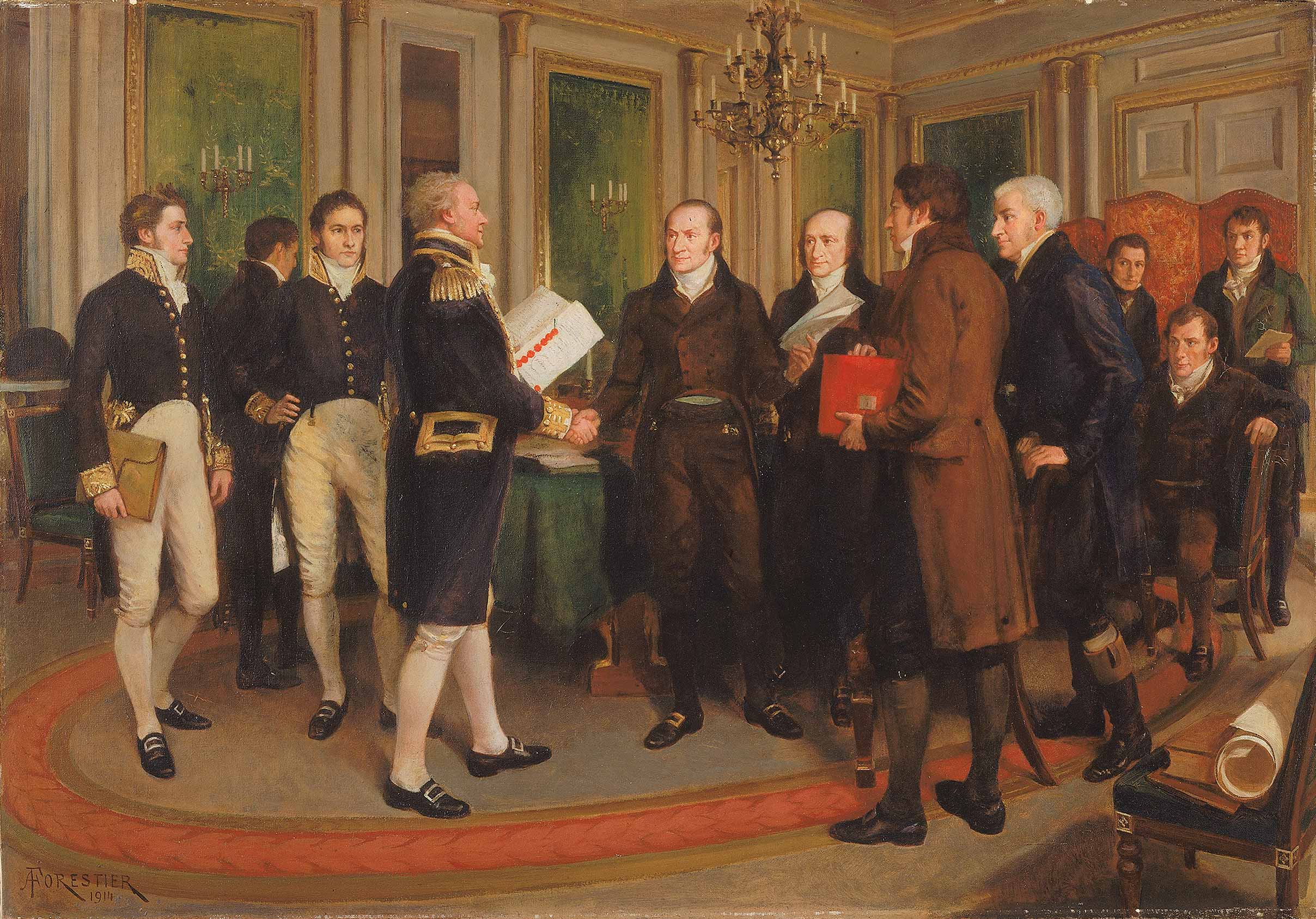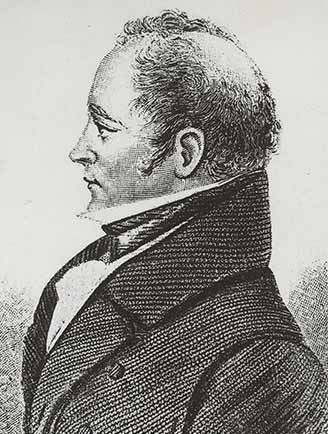
“The signing of the Treaty of Ghent, Christmas Eve, 1814.” Painting by Sir Amèdée Forestier. Courtesy Smithsonian American Art Museum, Gift of the Sulgrave Institution of the U.S. and Great Britain.
The HBC in the West
After the War
The Treaty of Ghent, which ended the War of 1812, was signed in Ghent, Belgium, on December 24, 1814. If the Americans had not sold Fort Astoria to the British in 1813, the British may not have established their strategic foothold in the Oregon Country. The Canada-U.S. boundary may have been drawn considerably farther north than it eventually was. But the British fur companies operating in the West ensured this did not happen, capitalizing on their control of Astoria after the War of 1812.
The Hudson’s Bay Company (HBC) was the British fur trading company operating in what is now Canada. East of the Rockies the HBC fought long and hard, through lower pricing and better negotiation, to wrest the trade away from the North West Company (NWC). By 1820, neither of these companies was realizing sufficient profits to maintain a viable business.
Fur Companies Merge
The directors of the HBC finally approached the directors of the NWC and offered to purchase their business. Realizing the depth and strength of their competitor, the NWC management sold their company and its assets to the HBC in 1821, thereby amalgamating British trade efforts across this vast continent.
George Simpson was named governor of this new, consolidated enterprise, and charged with the duty of making it profitable.

Fort Vancouver, lithograph based on a sketch by Henry James Warre in 1845. Courtesy B.C. Archives.

George Simpson (1787-1860). Governor of the Northern Department of the Hudson’s Bay Company from 1821 until his death. Courtesy B.C. Archives.
Fort Vancouver
In 1824, Simpson made an epic journey across North America to examine and assess the newly acquired possessions of the HBC.
Cognizant of continued conflict between Great Britain and the United States, and surmising that joint occupancy would eventually lead to a division of the Oregon Country, Simpson’s plan was to place a major post on the north shore of the Columbia. He expected the river to become the natural border between British and American territory.
The HBC quickly moved their operation to an upriver site at a place known as Bellevue Point, 90 miles (145 kilometres) from the sea. Fort George was still maintained as a minor post. Originally built in 1824-25, Fort Vancouver was rebuilt in 1829 to be the regional administrative and provisioning post for the entire region. It was surrounded by vast agricultural land and large quantities of salmon, the fur traders’ main diet in the West.
Other HBC Forts
That same year, 1824, Simpson sent an expedition northward to find a suitable location for a post on the Fraser River. Because its mouth and length were north of the 49th parallel, the Fraser would be a “fall-back” position, should the HBC lose its claim to the Columbia. In 1827, a party returned to build Fort Langley. Fort Victoria was built on Vancouver Island in 1843, creating an ocean port and strengthening the British claim to the island. These forts later played an essential role in determining the boundary between British and American territories.

